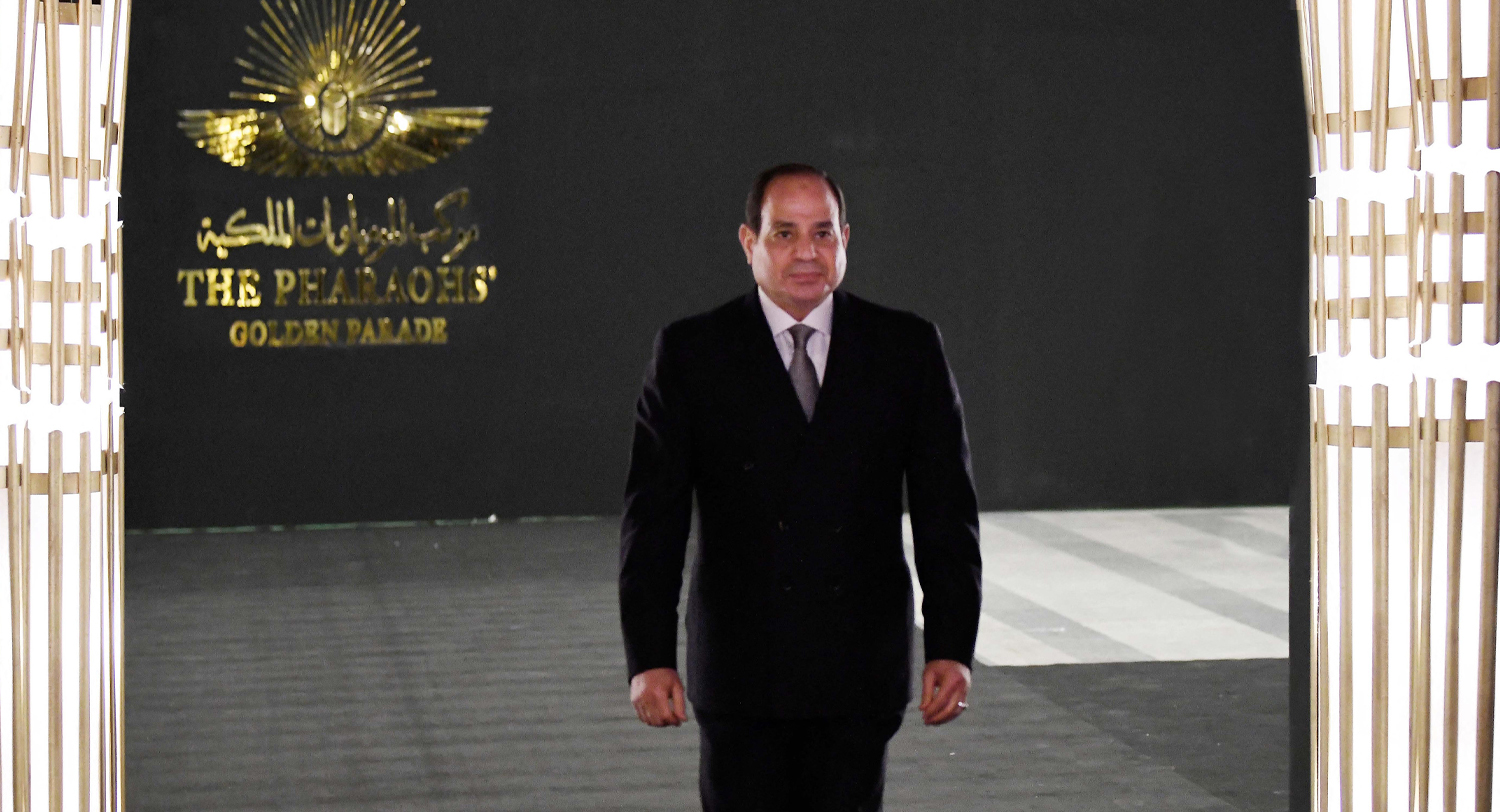What do the following events have in common? A new capital is being built in Egypt —“the Administrative” (al-idariyyah) for lack of a better name as yet—replete with architectural symbols of both stark modernity and references to pharaonic Egypt. On April 3, 2021, an extravagant “Golden Parade,” combining the use of ancient Egyptian attire and ceremonial objects, as well as dressed-up modern military vehicles, saw 18 mummified kings and 4 queens solemnly moved from the old site of the Egyptian museum in the heart of Cairo to its new location a few kilometers away. At the diplomatic level, during the opening ceremony of an international energy conference in Cairo on February 14, 2022, Egypt’s President Abdel Fattah el-Sisi made a beeline to the wheelchair of Israel’s Minister of Energy Karine Elharrar, an unprecedented gesture. And on March 28, Egypt’s Foreign Minister Sameh Shoukry was among the six participants of the “summit” in a hotel near Kibbutz Sde Boker in Israel (alongside the US, Israel, the UAE, Bahrain, and Morocco); again, this was a highly unusual step by a country that in the past did not hide its resentment of any Arab rapprochement with Israel.
>> Grand Strategy and Identity Politics: Read more from Eran Lerman
The answer to the opening question may lie in the complex conjunction between grand strategy and identity politics. As el-Sisi consolidates his rule—with all that this implies, in terms of the authoritarian uses and abuses of power—he is also taking steps to reorient Egyptian national strategy and symbolically redefine Egyptian identity. True, Egypt is still the proud host and leader of the Arab League, created by Egyptian politicians for Egyptian needs back in 1944–1945, and turned into a vehicle of ambitious pan-Arabism during the era of Gamal Abdel Nasser. True, it is and will remain an Arab country in terms of language and a Muslim majority nation in terms of religion. True, el-Sisi himself is a practicing Muslim, whose wife wears the hijab (or tarha as the Egyptians call it), and which may have accounted for the willingness of the Muslim Brotherhood, during their brief year in power, to trust him with the control of Egypt’s all-powerful military machine; it was a choice they came to regret.
In terms of identity politics, despite all the caveats above, el-Sisi is increasingly acting to put Egypt’s unique claims to fame as the oldest civilization—the umm al-dunya (mother of the world), with 7,000 years of recorded history and powerful symbols of grandeur and governance, such as the pyramids, familiar to all—back at the center. By necessity, this reduces the role played in the past by the slogans of pan-Arabism, which marked the Nasserist legacy, as well as the revolutionary pan-Islamism central to the ideology of the Muslim Brotherhood (Ikhwan or brethren ). Thus, the mummies’ parade may have been, to some extent, a spectacle designed to attract the tourist trade after the disastrous period of the COVID-19 collapse; but it was also a sign of el-Sisi’s pervasive perception of what is his country’s place in the history (and geography) of the world. Similar imitations of pharaonic rituals have become common also in Egyptian military ceremonies. Given the traditional Islamic abhorrence of all that reeks of pre-Muhammadan practices, associated with the age of jahiliyya (ignorance), the choice of such symbolism is highly significant and so are the architectural signatures that mark the new capital.

This use of such symbols is not new. In the early years of Egypt’s independence (or rather, semi-independence, given the residual functions retained by the British until the Treaty of 1936, and indeed until their final evacuation in the 1950s), art and literature in Egypt often reflected the notion that this was a reborn pharaonic nation. In the 1920s, several factors gave impetus to such nontraditional perceptions—including the nonconfessional aspect of the Wafd Party’s uprising in 1919; the template offered by the dramatic secularization of Turkey (and the abolition of the caliphate) under Mustafa Kemal; and even the international stir caused by the discovery of King Tutankhamon’s spectacular grave, which reminded Egyptians of what made their country so significant in the eyes of the West.
As the leading Egyptian intellectual of his age, Taha Hussein, pointed out in his 1938 work, “The Future of Culture in Egypt,” this interpretation of Egyptian history also entailed recognition of the links forged through the ages with other Mediterranean lands and cultures. For Hussein, the ancient Greeks, whose role in generating the modern ideas of democracy and free thought he greatly admired, were of much greater importance for Egypt’s identity and future than the Arab and other neighbors to the East. Today, in a range of ways—from the ongoing series of tripartite summits with the leaders of Greece and Cyprus and the creation and promotion of the EMGF (Eastern Mediterranean Gas Forum), to youth conferences with a Mediterranean regional theme—the Egyptian government seeks to build up its role as a strategic player in a Mediterranean alignment.
The tensions with Erdoğan’s Turkey, which until recently held a position de-legitimizing el-Sisi’s rule and actively supporting Egypt’s Muslim Brotherhood as well as Egypt’s enemies in Libya, clearly played a role in making el-Sisi more attentive to his country’s Mediterranean interests; but as argued above, this was also in synch with Egypt’s re-emerging historical identity. The same can be said about the new dynamics of the Egyptian–Israeli relationship: they serve specific interests (such as the common cause against Islamic State terrorism in Sinai) but they also fit in with redefinition of identity away from pan-Arabism and pan-Islamism. Egypt’s current grand strategy requires a new and different kind of regional integration. Egypt’s return to the roots and symbols of its ancient identity serve to enhance the prospects of such a regional reorientation.
>> Grand Strategy and Identity Politics: Read more from Eran Lerman

